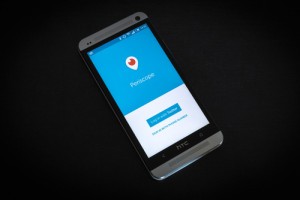By Donovan Triplett
In the 1980s, Greg Tate was one of only a few Black music critics at a major publication, but his career helped nudge the U.S. toward a more nuanced appreciation of Black genres. He looked to understand and distinguish, as he put it, “the way Black people ‘think,’ mentally, emotionally, physically,” and “how those ways of thinking and being inform our artistic choices.” He recognized the complexity and variance of Black artists, but also understood the kinship we hold as a collective. A kinship full of shared inspiration, memories, tendencies, and circumstances, that have a way of weaving into the fabric of Black music. Whether in the way we wield words, the chords we gravitate toward, or the references that move and inspire us—our creative work is intertwined with our culture.
I’ve noticed the same sort of influence in my work as a Black person in advertising. But mostly, I’d say, in the second half of the decade I’ve been working in the industry. In the first half, I was learning the craft from the experts at my agencies and through the people who wrote the literal books on advertising—nearly all of whom were white. I learned what kinds of words and phrasing seemed to resonate the strongest in presentations and in scripts. What type of jokes would get the creative directors to laugh or which type of insights would get the strategy directors to perk up. I was taught what “great work” looks like and how a great strategist sounds when they speak. All the while convinced that this is how to be a pro at this thing.
The industry is vocal that there’s no one right way to do anything. But even still, there are styles of operating that have dominated, pervaded the collective consciousness for so long that they make the leap from style to standard—invisibly forming people’s mental picture of the bull’s-eye. But as my confidence in my own lens started to grow, it got tough to ignore how lopsided of a sample I was learning good taste and good judgment from. Yes, I’d worked in four agencies in four states, each with different hallmarks and philosophies, but all united in surrounding me with mostly white people to learn from. In fact, across the industry even today, 80% of managers—the people shaping the standards and serving as umpires of the work—are white. At a point, growing up in this industry began to feel like learning how to podcast from all men (variety, of course, but a whole lot of glaring similarities).
At that midway point in my career, I started to wonder more intensely (or perhaps more despairingly), how many of this industry’s standards are slanted toward the idiosyncrasies of the white community (toward the way white people “think, mentally, emotionally and physically”). I wondered how many of our creative choices were invisibly imprinted with their community’s shared inspiration, memories, tendencies, and circumstances.
So I decided to push back however I could. Where a David Ogilvy quote might usually go, I put an Audre Lorde quote. In the audience personas, I’d swap the white mom named Elaine for a Black mom named Janine. When the room would laugh at a script’s punch line, I’d speak up about my confusion at the joke, then gently note how nearly every reference photo, comedian, or filmmaker used to “it’s kind of like this” the ideas to life was white (an oversight that’s happened more times than I can imagine counting).
It’s been my experience that most agency people across races could look at creative work from a Black person or group—whether music, film, literature, or even ads—and if questioned, could point out choices or elements that seem to represent the imprint of Black culture on the work (i.e., Issa Rae’s Insecure isn’t perceived as simply a show about friends in Los Angeles). Whether in subject, setting, or stylistic choices, we tend to be good at noticing the imprint of Black culture in the creative works of Black people. But why are we so bad at noticing the imprint of white culture?
Some of it may be rooted in the perception of identity across races. A study from the Pew Research Center found that only 15% of white adults view their race or ethnicity as central to their identity, compared with 79% of Black adults, 59% of Hispanic adults, and 56% of Asian adults. (Note: Indigenous adults were not among the surveyed.) In my life, I see myself as a Black strategist, not simply a strategist; my mother and father as Black parents, not simply parents; and my choices as intrinsically influenced by my Black identity. (I know the world certainly does.) But for the 85% of white adults who don’t see their race as central to who they are (and by extension, members of their community), it’s easy to imagine it would be difficult for those people to see their creative choices (and the choices of white creators) as being informed by their whiteness (e.g., seeing Wes Anderson as a filmmaker and Spike Lee as a Black filmmaker).
Toni Morrison once observed, “In this country American means white. Everybody else has to hyphenate.” In so many different ways, I’ve seen this psychological pothole leave so many in our industry nose-blind to the way whiteness is fused into so many of our default terms and conceptions—from how we picture “moms,” talk about Gen Z, or market to shoppers (not to be confused with “multicultural” shoppers). The default is inclusive in our minds, but the proof spills into the pudding.
One of the more famous campaigns of recent years is a string of Progressive ads on people becoming just like their parents. The commercials are funny, insightful, and seem to work well for the business goals. But I can’t help but feel a bit cheated when I see Black characters cast while the nuances portrayed feel so plainly patterned after white parents—whether in the tone and tenor written or the version of awkwardness baked into the characters. None of it done in a way that’s offensive or worthy of a PR scandal, but in a way that both misses an opportunity to explore a more authentic nuance and silently robs communities of color of the feeling that such nuance could’ve provided: of a chord that could’ve connected with their memory, while still making everyone laugh. I think about the distance between how LeBron James is able to speak and behave on The Shop versus how he’s written to speak and behave in ads (with Beats and Nike work being notable exceptions). I think about whose nostalgia advertising most consistently gravitates to—from Cardi B in a Wayne’s World callback, Doja Cat in an homage to Grease, Tracee Ellis Ross in a parody of The Shining, or the number of times we’ve found ourselves back in medieval Europe. I think about times in recent years when I (finally) got to work on campaigns with diverse leads, but time and time again have seen them imagined and crafted from presentations and director’s treatments in which nearly every artistic and tonal reference was from a white person, portion of white culture, or the Black people white people-like. It’s no surprise that only 32% of Black audiences feel industry representation of their identity group is accurate. We’re so often the face of someone else’s taste.
The insidious part, though, is that the imprint of white culture begins well before a creative choice is made. Sometimes, in ways that should be obvious—like when a research vendor I worked with categorized respondents by “white” and “non-white.” (Thankfully, they didn’t use “men” and “non-men” to delineate gender.) Most often, though, it’s much more subtle. I once worked on a general market brand that had a large Black audience. The agency in charge of creating the portrait of the target hinged its work on demonstrating how these were people who were talented but didn’t fall victim to being “braggadocious,” alluding to a perceived character shortcoming for people who were. Benign enough on the surface, but does every racial community equally look down on bragging? Would that large Black audience resonate as strongly with the work when in Black cultures, a vocal pride in one’s self and one’s work is not only welcomed but celebrated? Particularly, in a country that so often suggests we should dim our light (from referees over-penalizing Black athletes for their celebrations to pundits heckling Obama for the tan suit). With one tinted assumption, an entire pasture of the nuance-rich work is blotted out, in favor of a portrait aligned more closely with the way white cultures tend to think and behave.
It’s worth noting that we’re all susceptible to availability bias—our brain’s habit of treating things that come easily to mind as more common or more important. (And what comes more easily to mind than the things most prominent in your community?)
As with everyone, white creators should, of course, be allowed to draw from their culture’s shared inspirations—but the ethical dilemma comes in when your group has such a controlling grip on what’s able to enter the shared world that it’s from your creative community only. Unlike with music, film, and literature, there is no such thing as grassroots advertising. If you’ve got a new thought or style, you can’t just upload it onto YouTube or self-publish or get your friends together to cut a short film. All of our art has to, on average, filter through the hands and minds of an 80%-white-managing workforce. Just to get to clients who are often similarly skewed.
In speaking about the “white majority standards” that form under these sort of conditions, James Baldwin once shared, “You have to somehow break out of that and try to become yourself.” It’s taken years for me, but I think I’m closer than I was. Still, it feels that our creativity in this industry can never become the purest version of itself until it can break out of its shackled ways of imagining and envisioning. Our creativity is what it is now because of a mountain of slanted choices—each vulnerable to the references, wording, humor, comps, design aesthetics, audience portraits, casting preferences, setting choices, stylistic choices . . . etc.
For an industry whose concepts and breakout creativity are still so dominated by legends from the white community, perhaps part of the stewardship required is a more vigilant eye to which instincts may be more linked to race than “rightness.” We aren’t curing diseases with our work, but ads can still provide a tiny bright spot in someone’s day—so it matters who we serve and underserve. Is irony-based humor funny to everyone, equally? Or is it especially funny to most types of white people? Is minimalism as a design aesthetic appealing to everyone, equally? Or is it especially appealing to more types of white people? Is the version of Cardi B that we get in ads appealing to everyone, equally? Or is it especially appealing to a certain swath of white people? Is our shared conception of motherhood, friendship, luxury, adventure, determination, faith, fishing, young adulthood, or “great work” shared by everyone, equally? Or are those conceptions especially shared by white people? I can’t say for sure, but I’d love to find out what would happen if we asked the question.
Donovan Triplett is a strategy director at Wieden+Kennedy.
Fast Company – co-design
(3)







